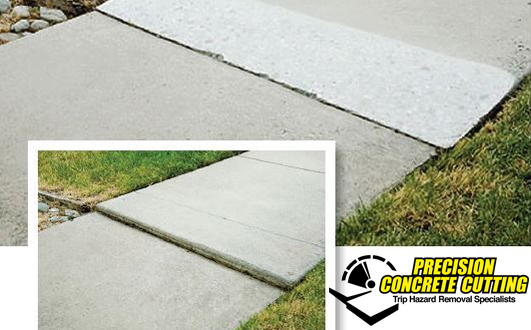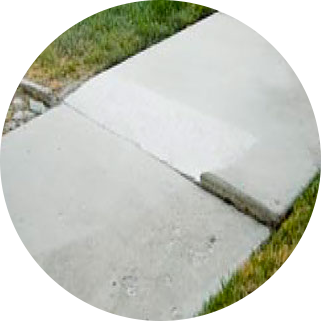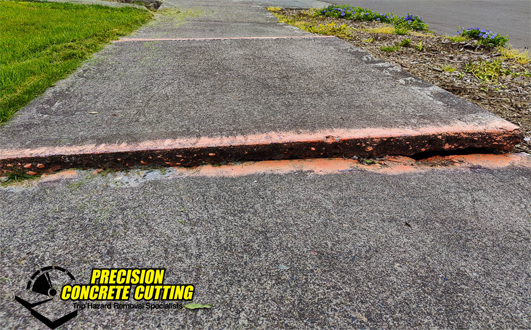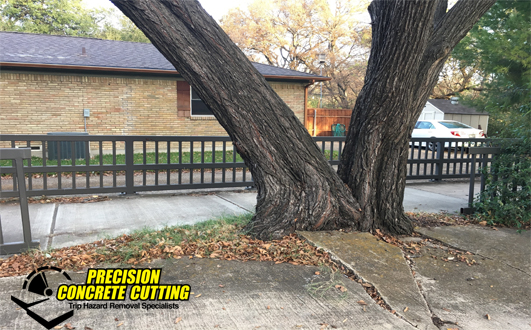ADA Compliance Regulations
ADA Compliance Regulations are important facets of owning and operating a publicly accessible property that all owners and managers should be aware of. Precision Concrete Cutting’s unique process allows us to provide property owners and managers a way to have their sidewalks repaired. This is in lieu of expensive entire panel replacements.
The goal? Bring our clients back in line with the ADA compliance regulations. It can be a serious problem if your sidewalk, walkway, ramps, or other concrete things become cracked, misaligned, raised, sunken, or outright broken. The ADA is the Americans with disabilities act, created and passed in 1990. The ADA is a set of rules which determines the safety limits for any publicly accessible pedestrian pathway. If you fail to meet this criterion due to damages of any nature, you’re creating seriously unsafe situations for those who wish to traverse your property. Liablity is on the property owners for injuries that would occur to any pedestrian harmed due to these circumstances, and so for both safety and financial reasons its important to stay in compliance. Additionally, inspections that reveal such violations, or the event of an injury to such, will result in heavy fines.
read onon below to see the various ADA rules, and get an idea if your property needs maintenance. Make sure to contact Precision Concrete Cutting
- Width:
There is a minimum requirement for the width of sidewalk panels, and a recommend standard. 3 feet – or 36 inches, is the minimum width permissible by the average portions of the sidewalk. Keep in mind, however, that this minimum is below the recommended threshold of 5 feet – or 60 inches- wide. If a sidewalk falls below this recommended threshold it will require additional passing spaces at least every 200 feet to allow pedestrians to safely move around each other. Sidewalk width requirements are especially important for wheelchair-bound individuals. For ADA compliance, the minimum sidewalk width is 36 inches (3 feet), though sidewalks can be wider. - Texture:
A sidewalk or walkway should be textured to provide good friction, and not be so slick that it creates a slippery surface. It must also be free of cracks or uneven areas, which leads us to the next item. - No Trip Hazards
A sidewalk or walkway cannot have a sudden height differential of 1/4″ or more. Over time, the land underneath the sidewalks becomes uneven as well as other factors like damages, erosion, weather, etc. If this height difference exists, it has to be taken care of with a repair before an issue occurs resulting in injury and liability on part of the property owner. - Slope:
The ratio of slop on any sidewalk cannot be greater than 1:20, or this creates an uneven dispalcement which is unsafe. - Curbs:
Curb Ramps are required to safely lead into any sidewalk from areas like intersections. The ramps must be at least 3 feet wide and have a slope less than 1:12.












